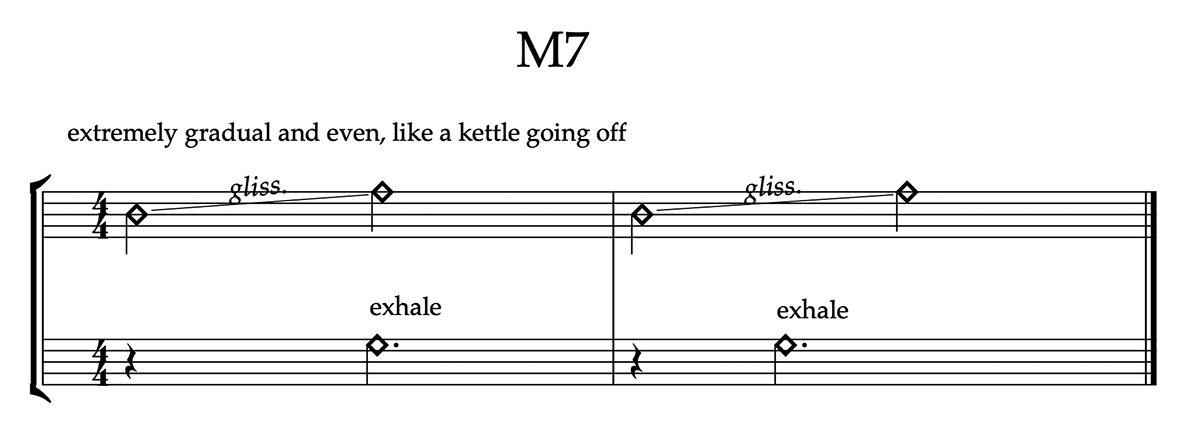Originally based on the parlor game Consequences, in which texts are assembled by guests without seeing (due to creative folding) what previously was written, exquisite corpse became an important source of collaboration and creative experimentation for surrealist writers and artists such as André Breton, Joan Miró, Tristan Tzara, and Marcel Duchamp. These artists used a form of the game as a way of assembling visual and textual ideas into a form that they could not have foreseen and, therefore, had very little control over. Some of the results were astounding, others less so. Every result, however, was something new.
Sound American’s version of exquisite corpse adds a few twists in keeping with our milieu and mission. In each cycle, three composers will collaborate on a short work, to be published in that cycle’s journals. One artist will go first, passing on a set of information to the next, who, in turn, will add, subtract, and change that information to create a new version of the piece before passing it on to the third, who will create a “final” take on the composition. The readers of Sound American will get to watch the whole process as it occurs as each version will be reproduced in subsequent issues.
This round of exquisite corpse is brought to a close with a new piece by New York–based composer and percussionist Lesley Mok. The Living Collection: Open Edition begins our next round by asking the performer to bring their imagination to the physical body and the world around it. – Ed.
Imagine one of those half exercise balls. If you stand with your feet together in the middle, you can achieve a balance that keeps the ball from tipping over. You can do the same by placing your feet on either side, but that’s not always the case—if you put most of your weight on one foot, the ball still may tip over. The opposite is also true: placing both feet on one edge of the ball doesn’t necessarily mean the ball will tip. That is, your body will have to lean away from your feet so that the weight of your torso offsets the weight of your lower body.
In The Living Collection: Open Edition, each improviser is asked to participate with equal force and weight, learning to find a center within multiple relationships, and opening up the possibility for multiple perspectives to evolve over time. The Modules are purposefully designed using a simple musical parameter: a pitch set, a texture, a rhythmic idea, a word, or an image, so that all unspecified parameters are left open for interpretation. My hope is that these structured parameters actually give freedom to an ensemble, and allow them to make choices in the music that speak to the weight of each idea and its counterbalance, which should naturally shift in tandem to maintain an equilibrium.
In a biological ecosystem, there exists a complex network in which different organisms are linked together through nutrient cycles and energy flow. In The Living Collection: Open Edition, new ideas may emerge, while at other times they decompose, but all should function together in synergistic and vibrant ways. In assembling an ensemble, think about creating an environment that is dynamic—one that surprises you and makes you ask “what if?” at each turn. This might mean collaborating with musicians whose instincts challenge your own logic. This juxtaposition of ideas might feel strange, but it might also force a new kind of engagement, one that supersedes an aesthetic cohesion and is as diverse as the ecosystem we live in.
Key:
1An ensemble can be of any size and any instrumentation.
2Any number of improvisers can decide to play a module, and any number of modules can be played at the same time. Modules that are instrument-specific are specified.
3Any parameter that is not notated is open to interpretation and their unique expression is encouraged. This can include key signature, meter, rhythm, dynamics, articulation, module duration, and so on.
4Assign at least one person, and no more than 1/3 of the ensemble, to be a Free Agent to improvise freely.









